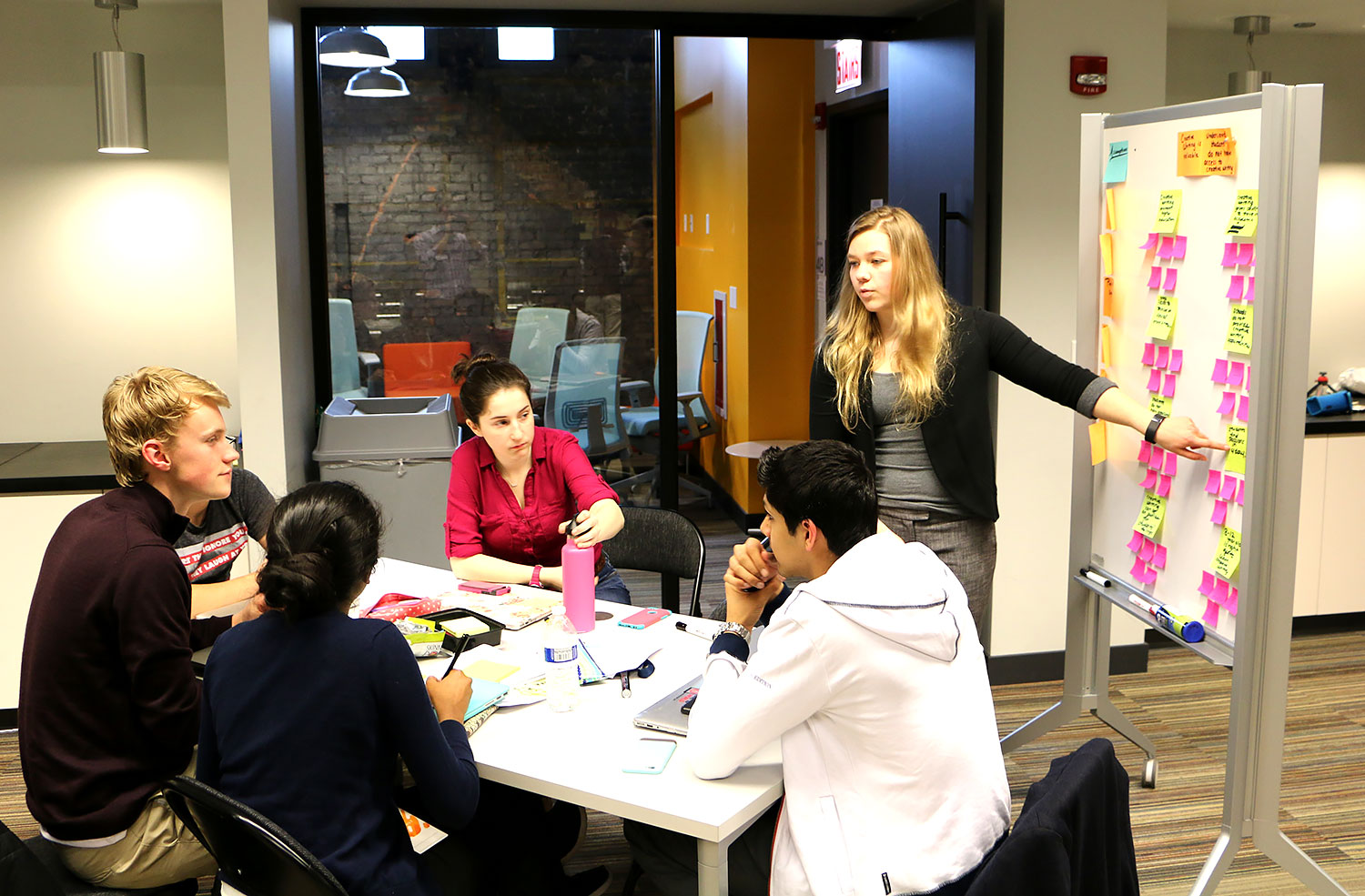Find Your Great Idea by Finding Your Customers First
By QØ Partner and Product Lead Chris Kosednar
One of the first questions we ask our Quarter Zero startup founders is: Do you know the problem you’re solving?
Do you really?
Of course, many of our young entrepreneurs (and many other entrepreneurs) think that they do—they have come up with a solution to something that has bothered them or they had a flash of insight that led to their interesting idea. And that’s great—it’s possible that there really is a great idea in there . . . the problem is, well, the problem. Is their idea the solution to a problem that truly needs solving.
In this article, you will learn how to:
Talk to potential customers about a problem
Pull potential insights from customer interviews
Identify unmet needs in the marketplace
. . . and you’ll build valuable solutions from there!
Sound good? Okay, let’s keep going.
At Quarter Zero, we have worked together with hundreds of high school students who are starting a company to help them turn great ideas into new businesses. Over time, we’ve developed a five-step process, a repeatable system, that (when combined with hard work!) makes it possible for literally anyone to start a business. And the first step for our high school founders (and, I’d argue, any entrepreneur) is not to come up with a great idea—it’s to find the best solution to a real problem.
And we do that through customer discovery.
What is Customer Discovery?
Your startup doesn’t actually start with an idea; it starts with potential customers—the segment of people who are most likely to need and want the service or product you provide—because the best business ideas are borne out of the real problems that real people face.
So, while you may have a problem you care about in mind—and that’s great!—customer discovery is about talking to real people before you come up with a solution to that problem; before you create a prototype, and before you start pitching. Those are all important steps, of course, but you’re more likely to go through them again and again if you don’t first start with customer discovery. First, you’ll find the people who have the problem you want to solve.
Then, through discovering, observing, and talking to potential customers before even coming up with an idea, you’ll be better able to identify what’s truly wrong in people’s lives and create the best solution to fix it.
So, How Does Customer Discovery Work?
Customer discovery starts with a conversation. Of course, this isn’t your regular chit-chat. You have to start with an idea—a hypothesis of sorts. This will help you narrow down who you should talk to. From there, you can use a conversational technique is called “Needfinding” (and was originally developed at Stanford University by Robert McKim): you find the right people to talk to one-on-one, you identify their needs, get clear on the shared problem, and you come up with the best solution for them. Your startup is borne out of what customers truly need.
Here’s how that works:
1. Talk to People
You don’t need to set up a formal interview to start the Needfinding process; just sitting and having a conversation about an interesting story or topic can be the creative start of a great idea! These conversations can and should be casual and friendly, too—creating a bond from the start makes it more likely that your interviewee will open up to you (and usually means you’ll get really great insights from them, too!).
However, it’s important to remember that, while this is a friendly conversation, it’s also an interview: you need to find the right people to talk to based on the problem you’re trying to solve, do less talking and more listening, and be curious about the people you’re talking to asking open-ended questions that encourage them to share their stories. (Personal, emotional stories are where entrepreneurs often discover the deepest needs!) And ask interviewees about memorable experiences related to the problem you want to solve. If you’re trying to find a solution for school transportation issues, for example, you might ask: “Can you tell me about your worst experience taking the bus to school?”
At Quarter Zero, we encourage our founders to create solutions for other young people like themselves. They will reach out to their own friends or other students in their high school, and set up conversations with 3-5 people. You might do the same or you might find another potential customer audience that’s a better fit. For the most part, there really aren’t “right” or “wrong” people to talk to at this point—so long as you’re talking to people who have experience with the problem you’re trying to solve; you’re simply having initial conversations that will help you figure out where you need to dig deeper.
2. Record and Listen to Your Interviews
Try to record your interviews, if possible—always asking for permission beforehand, of course. There are a lot of free apps that will let you record right from your smartphone! Recording your conversation will let you stay focused on getting the good story. And the good story is exactly what you should identify when you’re listening back on your conversations.
Listen back for spots of tension or contradictions in your customers’ stories—these are the “aha!” moments you want to focus on. These are the areas where you will eventually dig deeper to find the customer needs that you can solve. When you find those moments, write down 10-15 quotes on Post-It notes—the exact words that your customers have used—that seem significant, and set them aside until you get to the next step.
3. Find the Patterns + Identify Common Needs
When you have re-listened to each of your interviews, it’s time to review your quotes and search for the patterns in them! Pin your quotes up on a board and review them—ideally with a friend who can offer a different perspective and additional insights.
Try to look at each quote from different angles to figure out the specific needs that different potential customers share—keeping in mind that they may or may not have expressed the need explicitly. If you’re trying to solve the problem of neighbors needing odd jobs taken care of (and young people needing money), you may find that “having an easier way to pay”, “communicating job details effectively and efficiently”, and “finding the right fit for the job” are all unmet needs. You might also consider needs for which you can provide a new and innovative solution (e.g., “I need better dental hygiene”), as opposed to needs for which you’d simply iterate on a solution that already exists (e.g., “I need a better toothbrush.”)
Once you’ve identified a few needs, ask yourself: Is there a pattern here? Is there a consistent need that’s being expressed; a problem that I can help provide the solution for? You don’t have to know the solution yet—you’re just getting started. Simply zero in on the needs your customers are sharing. What’s the problem they’re all facing?
By the end of the customer discovery process, you will have five to eight well-articulated, shared needs. And with unmet needs come unmet opportunities—a lot of solutions or ideas for one need that you (and everybody else) may have never even considered! One of those opportunities will be the catalyst of your startup business.
* * *
Customer discovery allows you to see the world through someone else’s eyes; removing the lens through which you see the world to get clear on what the majority of people really want and need. By getting out of your own head, talking to people, and figuring out what problems customers are truly facing, your startup idea will be not only be scalable—it will be impactful, too.
The thought of diving right in and experimenting with an innovative new idea is exciting, to be sure—but the best businesses are borne from creating solutions customers actually need. Use customer discovery to identify that need right from the start, and come up with a solution that saves you time and solves real problems.
Customer Discovery Cheat Sheet
Talk to People
Find 3-5 target customers who share the problem you want to solve
Create an interview script with 2-3 key questions that will elicit emotional stories
Set aside 20-30 minutes for your interviews
- Be curious: Do less talking and more listening
Record and Listen to Your Interviews
- Ask permission to record your interviews—and record it!
Listen to your interviews again later, noticing spots of tension or contradiction
- Write down 10-15 quotes—the exact words that your customers have used—that seem significant on Post-It notes
Find the Patterns + Identify Common Needs
- Review your quotes and search for the patterns
Figure out the specific needs that different potential customers share
Consider needs for which you can provide a new and innovative solution
Ask yourself: Is there a pattern here? Is there a consistent need that’s being expressed; a problem that I can help provide the solution for?
Identify five to eight well-articulated, shared needs
What problem do you want to solve for people? Share it with us in the comments below!




